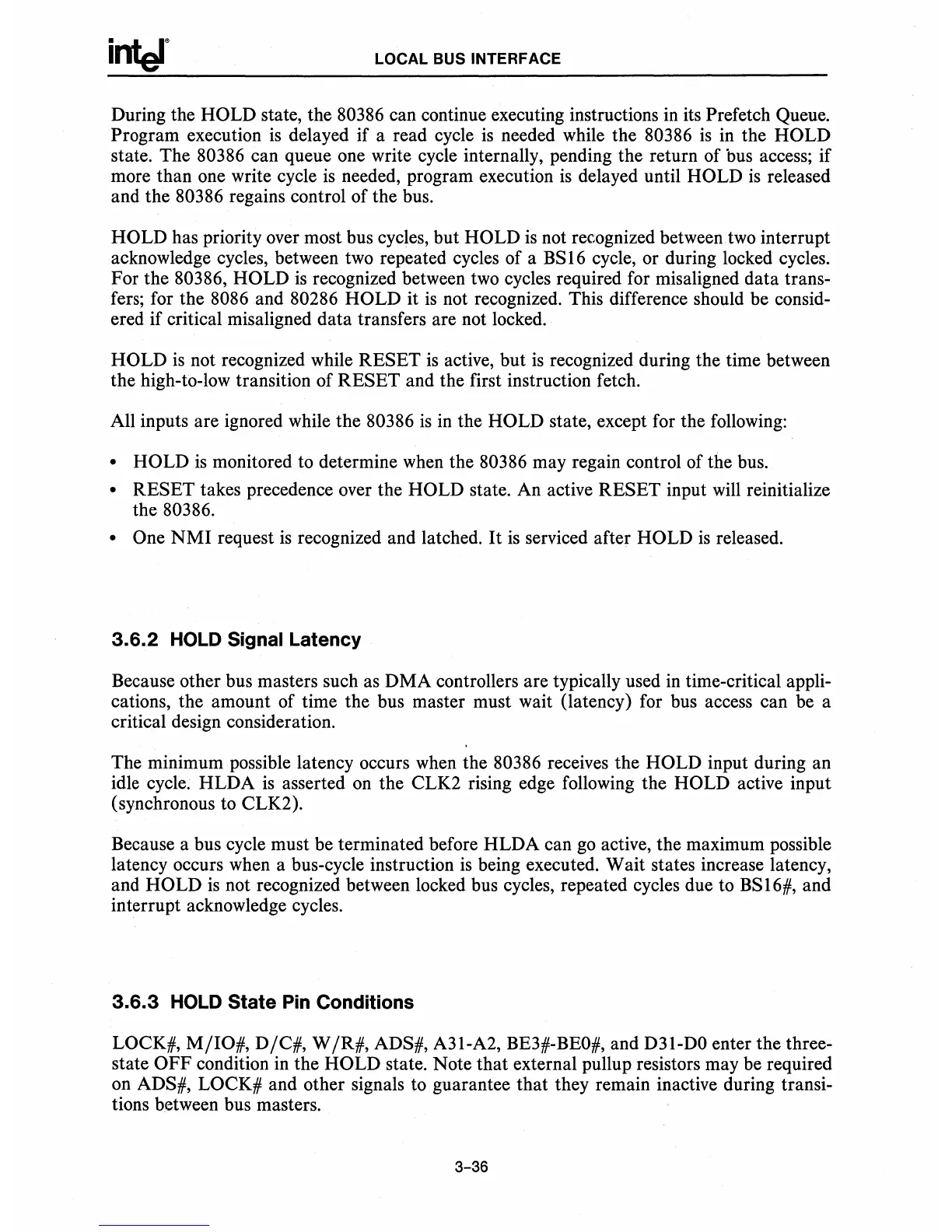LOCAL
BUS
INTERFACE
During the HOLD state, the 80386 can continue executing instructions
in
its Prefetch Queue.
Program execution
is
delayed if a read cycle
is
needed while the 80386
is
in
the HOLD
state. The 80386 can queue one write cycle internally, pending the return of bus access; if
more than one write cycle
is
needed, program execution
is
delayed until HOLD
is
released
and the
80386 regains control of the bus.
HOLD has priority over most bus cycles, but HOLD
is
not recognized between two interrupt
acknowledge cycles, between
two
repeated cycles of a BS16 cycle, or during locked cycles.
For the 80386,
HOLD
is
recognized between
two
cycles required for misaligned data trans-
fers; for the
8086 and 80286 HOLD it
is
not recognized. This difference should be consid-
ered if critical misaligned data transfers are not locked.
HOLD
is
not recognized while RESET
is
active, but
is
recognized during the time between
the high-to-Iow transition of
RESET and the first instruction fetch.
All inputs are ignored while the
80386
is
in
the HOLD state, except for the following:
• HOLD
is
monitored to determine when the 80386 may regain control of the bus.
• RESET takes precedence over the HOLD state. An active RESET input will reinitialize
the 80386.
• One
NMI
request
is
recognized and latched.
It
is
serviced after HOLD
is
released.
3.6.2
HOLD
Signal Latency
Because other bus masters such
as
DMA controllers are typically used
in
time-critical appli-
cations, the amount of time the bus master must wait (latency) for bus access can be a
critical design consideration.
The minimum possible latency occurs when the
80386 receives the HOLD input during an
idle cycle. HLDA
is
asserted
on
the CLK2 rising edge following the HOLD active input
(synchronous to CLK2).
Because a bus cycle must be terminated before HLDA can
go
active, the maximum possible
latency occurs when a bus-cycle instruction
is
being executed. Wait states increase latency,
and
HOLD
is
not recognized between locked bus cycles, repeated cycles due to BS16#, and
interrupt acknowledge cycles.
3.6.3
HOLD
State
Pin
Conditions
LOCK#,
M/IO#,
DIC#,
W
IR#,
ADS#, A31-A2, BE3#-BEO#, and
D31-DO
enter the three-
state
OFF
condition
in
the HOLD state. Note that external pullup resistors may be required
on
ADS#, LOCK# and other signals to guarantee that they remain inactive during transi-
tions between bus masters.
3-36

